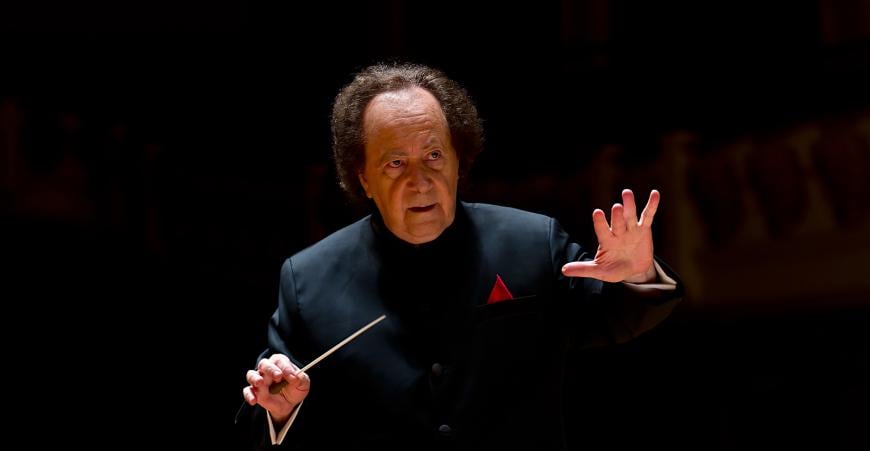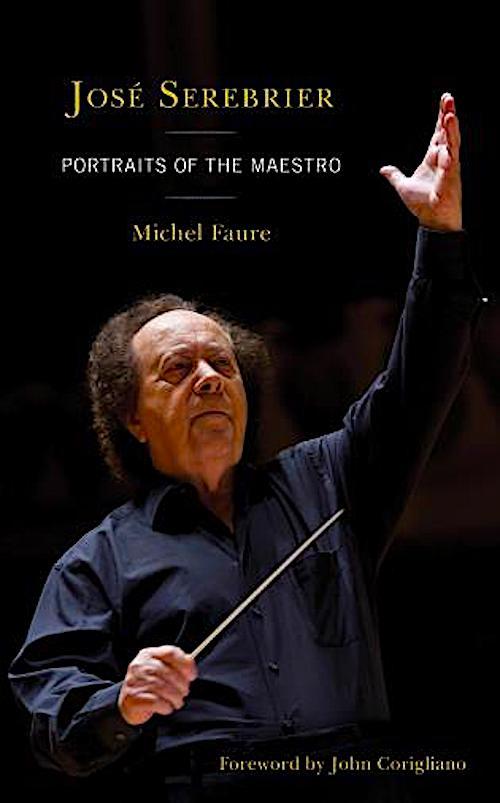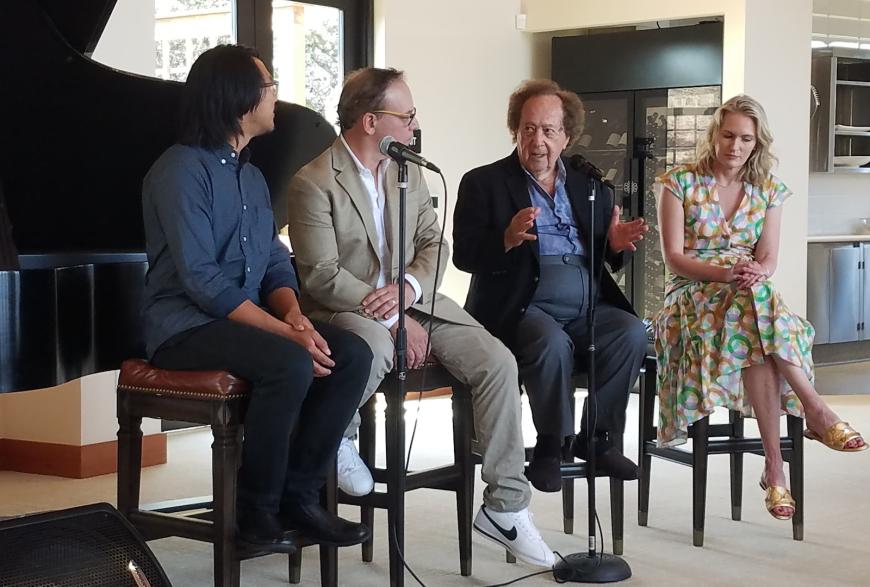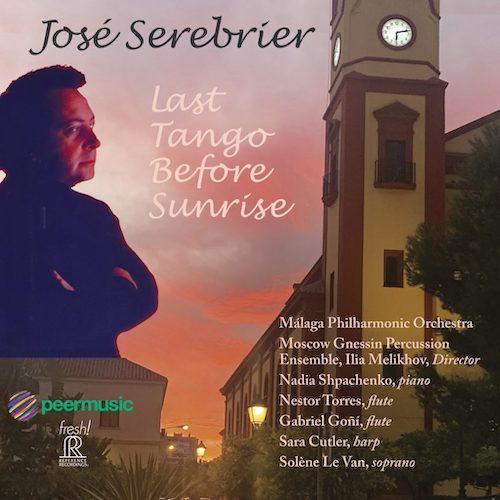
Blessed by sunshine and tentative relaxation of COVID-imposed isolation, an event at the Bouchaine Vineyards in Napa this past summer afforded me the opportunity of better acquaintance with Uruguay-born conductor and composer José Serebrier. Peer Music was celebrating the release of a compilation recording of Serebrier’s original works, dubbed Last Tango Before Sunrise, and a biography, Portraits of the Maestro, spanning his life and a career launched when, as an 11-year-old in Montevideo, he assembled and conducted a youth orchestra to play for an audience that included the Uruguayan president and his cabinet.

The now-83-year-old Serebrier, strolling through the Napa winery’s contemporary-designed event center and across its patio and later seated in a panel discussion, proved himself an upbeat, vibrant storyteller, with a harvest of good stories to tell. His spirit was also audible in a performance by Nadia Shpachenko, on the winery’s grand piano, of Serebrier’s dynamic Piano Sonata, written upon his graduation from Curtis Institute in 1958 and premiered then by Rudolf Serkin.
The biography, published under the imprint of Amadeus Press, conveys many of the musician’s stories in delightful detail, in the process name-checking a panoply of well-known and not-so-well-known classical music figures across several generations. We follow Serebrier as a roommate of Seiji Ozawa at Tanglewood; as a 17-year-old composer substituting his own First Symphony for Charles Ives’s Fourth Symphony in a Houston Symphony program conducted by Leopold Stokowski, at that conductor’s urgent request; and as a pupil of Pierre Monteux at the conductor’s summer school in Hancock, Maine, and also of Antal Doráti in Minneapolis (involving a brief flirtation with Doráti’s “ravishing” daughter, Tonina). Along the way are worthwhile reflections on the pedagogy of conducting.
Serebrier’s conducting career, wide-ranging both creatively and geographically, also involved acquaintances with a young John Adams (whose Common Tones in Simple Time Serebrier introduced with the Juilliard Orchestra) and with Salvador Dali.
There are also engaging accounts of Serebrier’s personal life, from his upbringing as the son of immigrant Polish and Ukranian Jews to his meetup at Carnegie Hall with his wife-to-be, soprano Carole Farley, and the raising of their daughter Lara, also a singer.
Portraits of the Maestro has a peculiar history and organization of its own. The front section appears as an exchange, in the 1990s, between Serebrier and French journalist Michel Faure. The need for a Q&A format isn’t clear, but occasionally Faure comes up with interesting prompts. This exchange was originally published, in French, in 2001, and was translated into English two decades later for the present volume, where some of its subject matter reappears, differently worded and arranged, in later sections of the book.

Fans of Charles Ives will enjoy the excerpt from Bernard Jacobson’s Conductors on Conducting (Vanguard, 1979), in which Serebrier expounds at length about his experience with Ives and in particular the Fourth Symphony, including insightful comparisons with Mahler and Bernstein. Ives’s Fourth emerges as a sort of fascinating idée fixe for the conductor. “Composer’s Notes” has Serebrier covering his own compositions, from his Sonata for Violin Solo, written in 1948 when he was 10, to his Nostalgia for solo viola and The Year 2020 for woodwind quintet, both composed in that year.

He seems comfortable in a role of what may seem at times like reflexive appreciation, but Serebrier has, by this point in the book, earned the reader’s trust as an experienced and appreciative commentator on the work of others. Certain elements of the “Composer’s Notes” reemerge in the words of musicologist Paul Conway in his section, “on the music of José Serebrier.”
There’s a list of awards received by Serebrier from the Guggenheim, Rockefeller, NEA, and other organizations, and mention of his several Grammy nominations. Also listed are published works and a discography. An interesting appendix contains appreciative and complimentary letters written to Serebrier by Leopold Stokowski in the 1960s.
For music lovers not sufficiently familiar with Serebrier, the book provides proof of the longevity and breadth of his careers as conductor and composer. “If I weren’t a conductor, my music would be played much more,” he’d commented at the Napa event. Both Portraits of the Maestro and Last Tango Before Sunrise testify to the expression of his creativity through a variety of instruments and ensembles, including percussion, trombone and strings, accordion, and chamber orchestra, double bass and orchestra, solo viola, a cappella choir, and the like. Serebrier’s original work across his recorded catalogue, including this year’s compilation, showcases a felicitous and imaginative spirit refreshing and very easy to like, much like the persona in the book’s pages.




